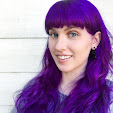About a month ago, the folks at Abram's Books and and Windham Fabrics reached out to me about participating in the blog hop for Lotta Jansdotter's new book,
Everyday Style. I had flipped through the book at Quilt Market and even added it to my Amazon wishlist, so I jumped at the chance to participate.
Everyday Style is not your typical project-based book. The book consists of five "core" garment patterns (a skirt, jacket, pants, sleeveless top/dress, and a sleeved top/dress) that between two to five variations each as well as four simple bag patterns. Upon my initial flip-through, the structure was a little confusing, but everything clicks when you sit down and read it properly (something I'm not always good at). It reads more like a hybrid of Japanese sewing books like the
Stylish Dress Book collection, a fashion magazine, and a series of journal entries. It's quite unique in that regard.
The first portion of the book is divided into four chapters by season. Each seasonal chapter features gobs of gorgeous photos of the garment patterns in fabrics and outfits befitting the season along with brief tutorials for accessories and embellishments (fabric jewelry, pom poms, wool cuffs, scarves, etc). If you're the type of person who likes to see different versions of patterns to get your creative gears turning, you'll adore this book. If you're more of a straight-to-the-point, no-frills type,
Everyday Style might be a lot to wade through.
The second section of the book contains the actual instructions for sewing the garments and bags. Each pattern includes illustrated cutting diagrams, and all measurements are listed in both imperial and metric, so readers outside of the US will be happy campers. There are illustrations for the instructions, albeit small and somewhat sparse. For this reason, I'd say the patterns may not be for suitable for absolute beginners. I had no trouble understanding the instructions, but I've also had experience making garments. Instruction wise, the patterns are comparable to most of the Japanese sewing books I've read.

I made the Esme top using the spotted print from Lotta's Lucky collection. It was a super quick and simple project with the exception of attaching the set in sleeves. Like many patterns with set in sleeves, the instructions call for two lines of basting stitches to ease in the sleeve cap. This approach is a drastic over simplification of easing in a sleeve. It never works for me. The gathering approach always results in a puffy sleeve (which I hate) while the photographs clearly show a smooth sleeve. Instead of basting, I opted to pin the everloving crap out of of the sleeve cap, which results in less puff-age.
If you're looking for some basic sewing patterns and tons of photographic inspiration, Everyday Style will make a lovely addition to your library.
Blog Tour Schedule
Dec 1 – Lotta
Prize Giveaway!
The sponsors of the blog tour have a prize pack for one of my lucky readers. The winner will receive a copy of
Everyday Style, a fat quarter of Lotta’s fabric from Windham, Lotta temporary tattoos, and Lotta washi tape.
To win, leave a comment with your email address by Saturday, December 12th at 9am CST. I'll pick one winner at random.
Extra Linkage
To learn more about Lotta and the contributors to Everyday Style, check out these links.





















































